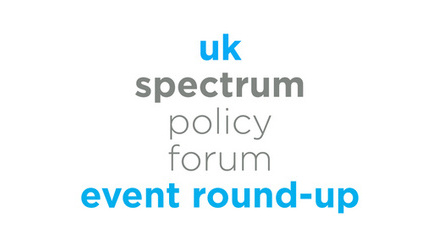Ofcom launches new space spectrum strategy
The UK’s communications regulator, Ofcom, has published a consultation on its proposed new space spectrum strategy, which sets the commitment to operationalise and coordinate the space domain whilst ensuring there is appropriate spectrum available for all users.
Ofcom last set out a strategy for spectrum work in the space sector back in 2017, but recent developments and the rapid expansion of the sector, with the likes OneWeb and SpaceX deploying large numbers of new non-geostationary orbit (NGSO) satellites has prompted the regulator to release a new policy document.
The purpose of this strategy is to:
- identify key trends in the sector affecting spectrum use
- identify the broad focus areas and specific activities in those areas over the next 2 – 4 years
- identify cross-cutting activities to take account of our new spectrum management strategy
- set out our ongoing activities that support delivery of the strategy
- identify further activities to address NGSO satellite communication systems
The consultation closes on 24 May and Ofcom aims to publish its final strategy later in the year.
While Ofcom recognises the critical role of satellite in broadcasting or in emergency and disaster relief communications, the regulator prioritises three work areas: communications, earth observation & navigation and access to space.
1. Communications
Spectrum access
- Plans to allow additional access to the 14.25-14.5 GHz band
- Develop licensing approach to Q/V bands and higher frequencies (E-band) for gateway earth stations
- Additional capacity for ESIMs, including considerations for potential use in 14.25-14.5 GHz band, as well as reviewing existing arrangements in 27.5 -30 GHz
-Monitor developments in communications directly to/from ‘normal’ mobile handsets
Efficient use, sharing and assurance
- Support international work on the review protection criteria for FSS
2. Earth observation and navigation
Spectrum access
- Potential for considering extending RSA to 26.5-27 GHz for further protection of downlink sites for Earth observation data, whilst taking account of MoD use and future 5G authorisations
- Consider evidence of future demand for 8 GHz ROES sites across the UK and whether any additional protections needed in light of growing fixed link use
- Engage in international work on inter-satellite links under WRC-23 Agenda Item 1.17
- Support new allocation for active EESS around 45 MHz (WRC-23 AI 1.12) review of existing EESS (passive) allocations and possible new allocations in the band 231.5 – 252GHz (AI 1.14) to enhance climate change monitoring and weather forecasting capabilities
- Provide support as appropriate for the UK’s satellite based Positioning, Navigation and Timing (PNT) Programme
Efficient use, sharing and assurance
- Consider Earth observation uses of spectrum when introducing new services and engage internationally to promote a balanced approach
- Propose updates to the recommendation, including that it captures information on the selectivity of receivers
- Engage in ITU-R work to develop a new Recommendation on the optimal use of S-band for TT&C
- Encourage manufacturers to use more robust GNSS receivers where available and will monitor developments of standards for PNT services
3. Access to space
Spectrum Acess
- Support and lead CEPT work to create a regulatory framework for space weather space weather sensors which operate under allocations for other services in the Radio Rgeulations
- Engage with all operators on spectrum authorisations for UK space launch
- Create an international framework for sub-orbital vehicles under Agenda Item 1.6 at WRC-23
- Consider appropriate access to spectrum for radars to track the movements of objects in space
- Seek to understand whether changes to international spectrum allocations are needed to support in-orbit servicing and other safe space initiatives
Efficient use, sharing and assurance
- Proposals for the appropriate protection of radio astronomy sites in the UK ahead of the 26 GHz award
- Consider new licence conditions to ensure protection of radio astronomy
- Engage in CEPT and ITU work on development of appropriate solutions for protection of radio astronomy sites in the UK and abroad
The challenges and opportunities raised by the growth of NGSO satellite communication systems seem to be so significant that Ofcom has devoted an entire chapter of the new space spectrum strategy to these constellations.
NGSO: challenges and opportunities
The strategy recognises that the emergence of NGSO systems could increase the capacity of networks and the range of services, delivering great benefits to UK consumers and businesses.
But if operators’ plans come to fruition, NGSO constellations could also present significant interference challenges between themselves and other spectrum users - given they make use of spectrum in a more intensive and dynamic way than existing GSO satellites – as well as competition challenges.
Following the recently-published licensing approach to NGSO, Ofcom has now introduced additional measures in its space spectrum strategy.
Summary of key actions relating to NGSO satellite communications
Spectrum access for NGSO earth stations
- There is no need to consider spectrum specifically for NGSO
- Consider updating earth station network licences, ship and aircraft licences so that NGSO ship and aircraft earth stations can broadly use the same frequency ranges that are already available for GSO use
International regulations for ESIMs
- Continue support of work on WRC-23 Agenda Item 1.16 studying NGSO ESIM provided that incumbent services remain adequately protected
NGSO-NGSO sharing: Improvements to international (ITU) framework
-Seeking changes to: create guidance on how much interference NGSO systems should be prepared to accept from one another, increase certainty around the changes to NGSO, or Quantifying how much the orbital characteristics of a NGSO system can deviate between what has been recorded by the ITU and the actual operation among others
NGSO-NGSO sharing: Handling of interference
- Develop our national interference monitoring capabilities and our understanding of the resilience of NGSO systems to interference
- Continue to promote the development of globally harmonised approach through ISRMM and the ITU
NGSO-NGSO sharing: Evolution of national NGSO licensing regime
- Extend our NGSO licensing regime to additional bands (e.g. 14.25 – 14.5 GHz)
- Consider opportunity cost of NGSO systems when we next review the pricing of satellite earth station licences
NGSO-GSO sharing
- Introduce licence terms to put conditions on NGSO downlink
- Developing Ofcom capabilities for handling NGSO to GSO interference
- Continue to support improvements to the way NGSO systems are modelled when assessing their interference potential towards GSO systems
NGSO downlinks sharing with Radio Astronomy
- New licence conditions to ensure protection of radio astronomy
- Develop a new approach to handling of NGSO interference to Radio Astronomy
NGSO systems sharing with fixed links
- Continue to engage in studies (as part of WRC-23 Agenda Item 1.16) on sharing between NGSO ESIM on aircraft and ships and fixed links.
MSS NGSO communication systems below 1 GHz
- Consider moving national authorisation from exemption to light licensing
- Support reform of the CEPT framework for MSS systems below 1GHz
- Monitor WRC-23 agenda item for new MSS allocations.










